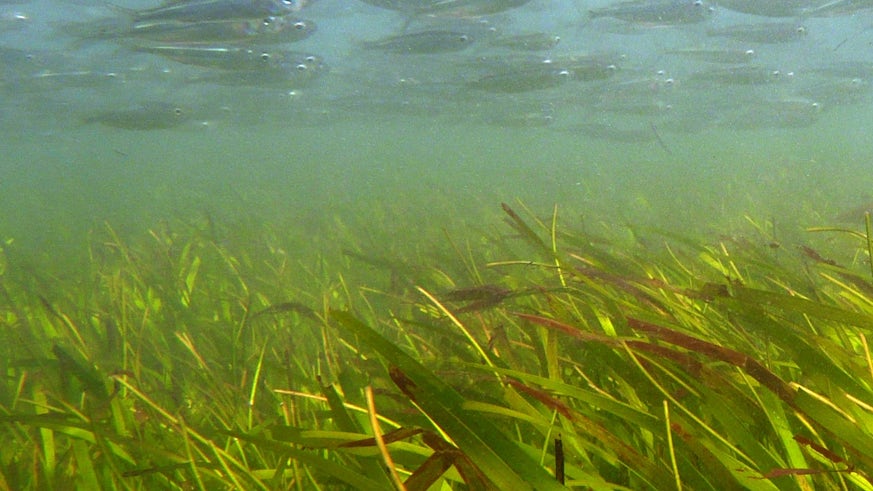New research highlights importance of Indonesian seagrass conservation
1 October 2014

Research by scientists at the Sustainable Places Research Institute and Seagrass Ecosystems Research Group, in collaboration with Indonesian NGO (FORKANI) and the Wildlife Conservation Society examined the importance of globally threatened seagrass meadows for marine fisheries throughout Indonesia.

In Indonesia there is over 30000km2 of seagrass. These threatened habitats provide important food and shelter for animals in the sea and are also important for storing carbon, pumping oxygen into the air and protecting Indonesia's coasts from erosion.
The recent surveys conducted in the Wakatobi National Park in SE Sulawesi, at the centre of the Coral Triangle biodiversity hotspot, build on previous case studies by the authors in Indonesia and throughout the Indo-Pacific that clearly show how seagrass is both locally threatened as well as being a source of hugely important local food.
The study, which included in water fish surveys, fisheries landing surveys and household interviews showed that at least 407 species of fish are present in Indonesian seagrass meadows. In the Wakatobi 68% of fishing activity is in seagrass, 62% of fish caught use seagrass meadows at some stage in their life cycles and significantly, people showed a preference for seagrass food fish species such as the White-spotted spinefoot (Siganus canaliculatus) known locally as 'Kola'.
The case study in the Wakatobi highlights the importance of seagrass meadows in supplying every day food for local people. Unfortunately in the Wakatobi and throughout Indonesia, these habitats are being degraded at an alarming rate from a range of diverse factors including poor water quality, coastal development and destructive fishing practices. Seagrass meadows need to be placed high on the Indonesian conservation agenda, not just to protect biodiversity but to protect national food security and economically important fisheries exports.